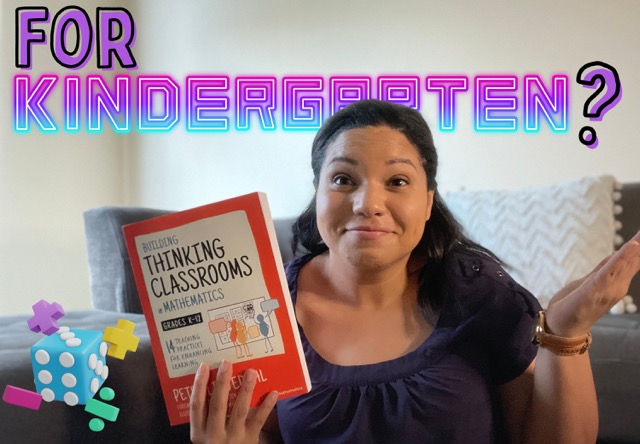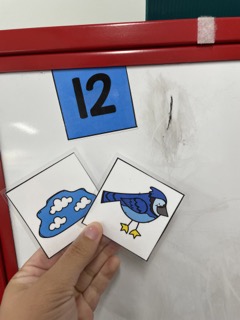A Kindergarten Journey into Building Thinking Classroom in Mathematics
- Lara

- Nov 18, 2022
- 4 min read
Updated: Nov 7, 2023
Based on the book Building Thinking Classrooms in Mathematics K-12* by Peter Liljedahl
Take a look at the tasks I've been using!
There has been a push in my building for years for students to engage in “high-quality math tasks” and to just “differentiate down” for my grade level. I found that this advice was vague and unhelpful. I have found and implemented tasks to various levels of success, but often in kindergarten, we have students who have never been to school before so a task all students can engage in can be a challenge to find and can devolve into whack a mole with misbehaviors or just off-task behavior. The most success I’ve had is with hands-on tasks, with minimal language, and working in pairs in the form of counting collections of tasks from YouCubed or nrich.maths.org (both great resources!) Learn about some of my own tasks here!
I wanted a bit more of a framework for presenting and having students engage with these “high-quality tasks” that were appropriate for my age group, then in my suggested groups on Facebook I came across Building Thinking Classrooms in Mathematics K-12 and teachers were raving! I was skeptical because a K-12 resource seemed far-fetched, big kid people often don't understand the needs of little kid people, but nevertheless, I read the book and was happy to see that the researchers had been in classrooms from K-12 and highlighted tweaks that would support success with various age groups and takes the time to explain the why of their recommendations and addresses the nuances that I feel can be overlooked. Some later chapters did not apply to me personally but I could really envision my students having success with this methodology so I decided to give it a try. You can here me talk about my beginning experiences in this video also at the bottom of this post!
The idea is that students learn how to “do” school and get comfortable that way and to move the students from “studenting” to “thinking” we as teachers need to disrupt their environment enough that it prompts students to think actively and not hear information passively to increase understanding and engagement. The way the book is written there are different “toolkits” or areas of implementation and you can start with the first three: give thinking tasks, your groups should be visibly random, and use vertical non-permanent surfaces or VNPS like whiteboards.
Appropriate thinking tasks are going to be trial and error depending on my students
I created numbered color-coded spaces. My students picked from a bag and that’s how they found their partners. I would like to eventually use a digital randomizer that will be quicker but to start I wanted the kids to see that the groups are random and to understand that they will work with someone different every time.
VNPs I luckily have. (My school was just renovated and whiteboards were put up everywhere so I was good there).
The book recommends where to start, and like anything new, setting up routines and using noncurricular engaging tasks now so students can focus on their math tasks later. Being at the beginning of the year and following directions is a skill we are very much working on (if you know you know). My goal for our first “task” was to find your partner, get to the correct spot, and share the marker! Getting started was a bit of a challenge but the kids figured out that their time to draw on the whiteboard was timed and got quicker at switching who had the marker and getting right to work. The idea behind the kids sharing the marker is that they need to communicate to solve the problem. From my observations, the kids did not have trouble sharing in that setting (win!) but when it was time to draw, their inclination was to draw their own picture and not to create one together. I think drawing together is still a bit abstract for them so these are my next steps:
In random groups have them decide what to build and build something together with blocks since that feels more like play for them. During that time I would like to see them begin to communicate more with each other toward a common goal.
During minilessons, I want to work with them on having an on-topic academic conversation so that those skills can carry into their group work
The next time they are at their VNPs, encourage them to try to decide to draw something together.
We’ll see how it goes, stay tuned for the next update! You can read about my update here or watch the next video in the series!
Are you looking for tasks? Get the Start Pack with Noncurricular tasks, the Kindergarten Task Bundle, the 1st Grade Task Bundle, or the 2nd Grade Task Bundle!
Some links may be affiliate links

















Comments